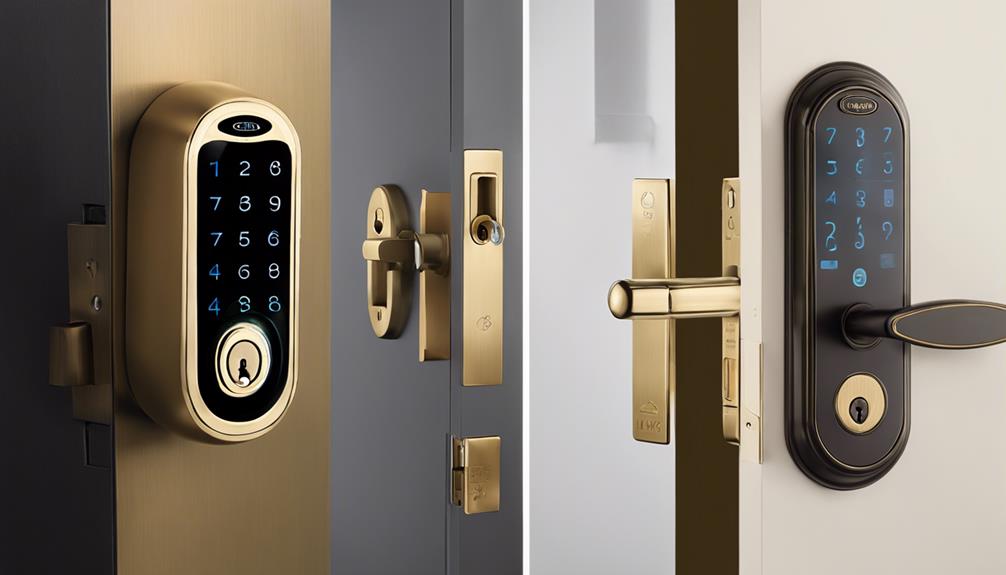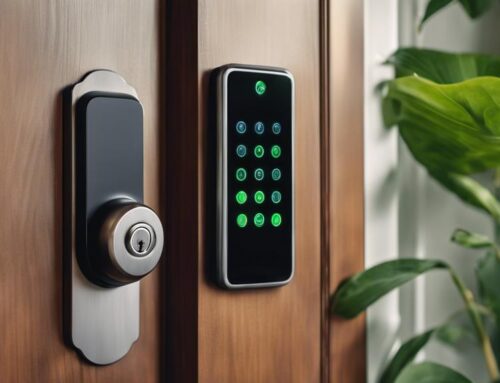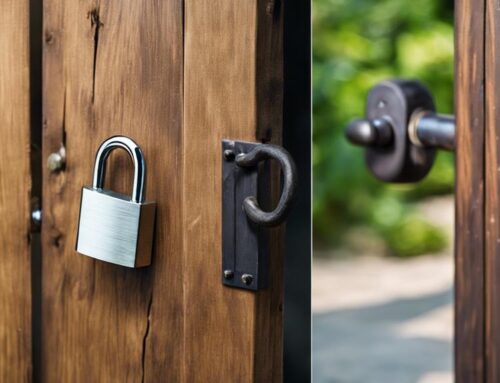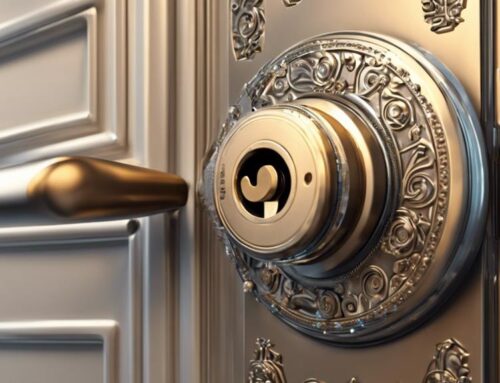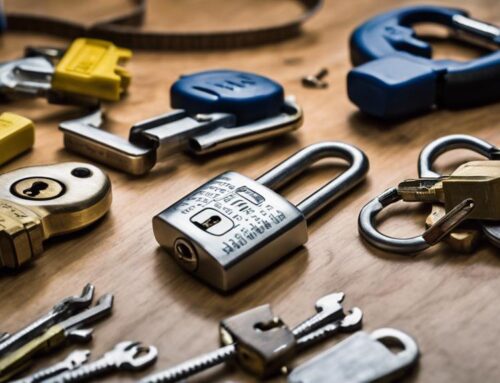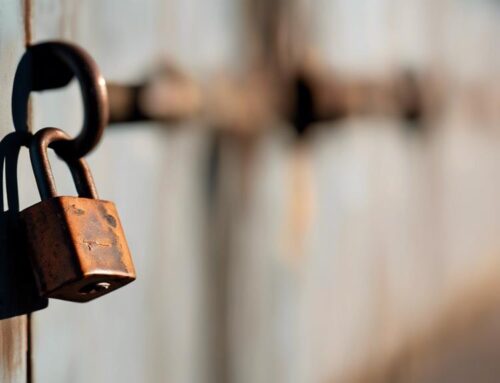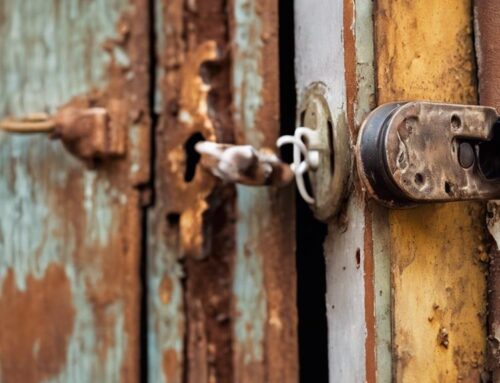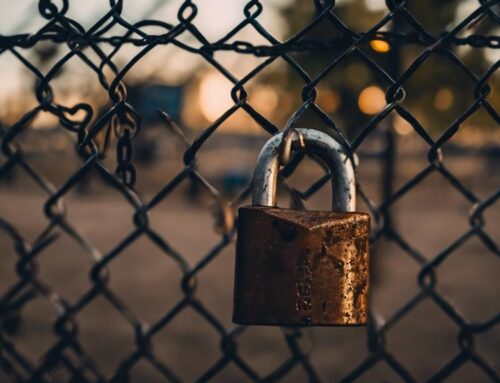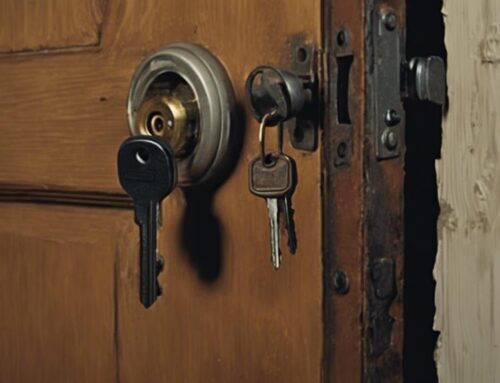When comparing smart locks and traditional locks, you'll find that smart locks usually cost between $100 and $300, while traditional locks range from $20 to $100. Smart locks offer advanced features like remote access and keyless entry, but they come with higher installation and maintenance costs. Traditional locks are easier to install and require minimal upkeep, making them a more budget-friendly option initially. However, smart locks could potentially lower your insurance premiums due to enhanced security. If you want to understand more about long-term costs and benefits, keep exploring your options.
Key Takeaways
- Smart locks range from $100 to $300, while traditional locks cost between $20 and $100, making traditional locks more budget-friendly initially.
- Traditional locks have lower maintenance needs, while smart locks require battery replacements and software updates, increasing long-term costs.
- Smart locks offer advanced features like remote access, while traditional locks provide reliable physical security with straightforward installation.
- Longevity differs; traditional locks last 20-50 years, whereas smart locks typically last 5-15 years due to electronic components.
- Smart locks may enhance property appeal and potentially lower insurance premiums, while traditional locks attract buyers valuing simplicity and reliability.
Overview of Smart Locks
Have you ever wondered how smart locks are revolutionizing home security? These innovative devices offer an array of benefits that go beyond traditional locking mechanisms. With features like remote access, keyless entry, and real-time notifications, smart locks provide peace of mind, especially for those who prioritize serving others and ensuring their loved ones are safe.
Additionally, smart locks often incorporate advanced security measures, such as encryption and two-factor authentication, making them a formidable option against theft and unauthorized access, as seen in smart lock security comparisons.
When considering smart lock cost, it's important to weigh it against traditional lock pricing. While the initial investment for a smart lock may be higher, the long-term benefits often outweigh this upfront expense. Smart locks typically require less frequent maintenance, reducing lock maintenance costs over time. You won't have to worry about wear and tear as much as with traditional locks.
Plus, many smart locks come with user-friendly apps that allow you to manage access for family members or guests effortlessly. This empowers you to provide help and security for those you care about, all while enhancing your home's safety.
In the end, investing in a smart lock could prove to be a valuable choice for not just your home, but also for the well-being of those you serve.
Overview of Traditional Locks
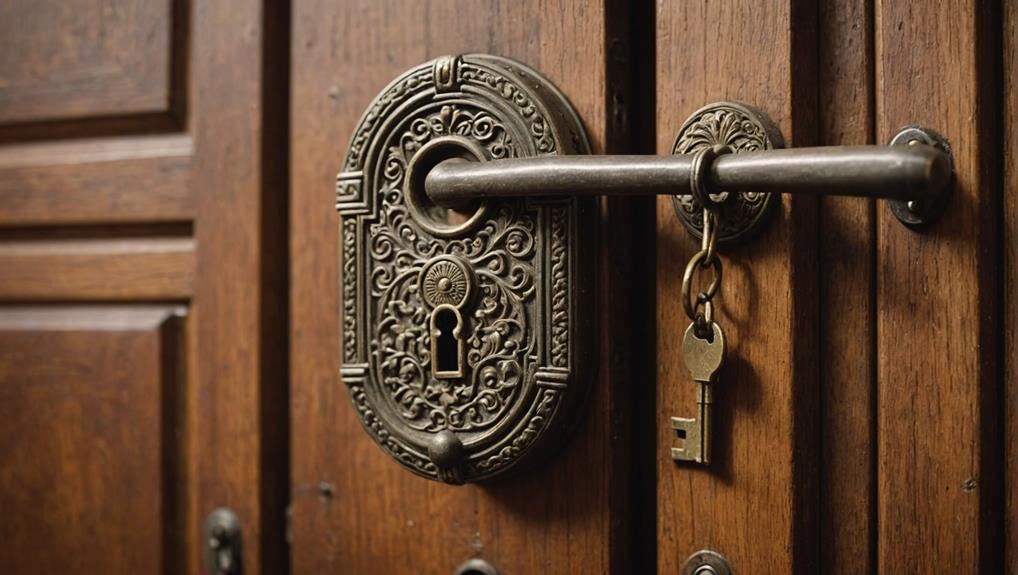
When you think about traditional locks, you'll find a variety of types, each with unique security features. Common options include deadbolts, knob locks, and lever handle locks, each offering different levels of protection and convenience.
It's important to evaluate how they install and what maintenance they require to keep them functioning properly. Choosing the Right Lock can help you determine if traditional locks are the right choice for your needs.
Understanding these aspects can help you determine if traditional locks are the right choice for your needs.
Types of Traditional Locks
Traditional locks come in various types, each designed to provide security and convenience. Understanding these options can help you make informed choices for your home or business while considering traditional lock costs.
Here's a quick comparison of some common traditional locks:
| Lock Type | Features | Average Cost |
|---|---|---|
| Deadbolt | High security, resistant to force | $30 – $100 |
| Knob Lock | Basic security, easy to install | $15 – $50 |
| Lever Handle Lock | User-friendly, good for accessibility | $20 – $70 |
| Padlock | Portable, versatile for various uses | $10 – $60 |
| Mortise Lock | Elegant design, high durability | $50 – $150 |
When performing a lock cost comparison, consider how each option fits your needs. While smart locks might incur higher expenses, regular lock expenses often remain budget-friendly. By understanding the types of traditional locks, you can better serve your family's security needs while managing costs effectively.
Security Features Overview
Understanding the security features of traditional locks can help you make a smarter choice for protecting your space. Traditional locks have been trusted for generations and offer several key benefits:
- Physical Security: Solid construction materials make it difficult to break or pick.
- Simplicity: Easy to use, requiring just a key for access.
- No Power Dependency: They don't rely on batteries or electricity, ensuring they work in any situation.
- Cost-Effective: Generally, they've a lower upfront cost compared to smart lock installation price.
When you consider these features, it's clear that traditional locks provide reliable security. They encourage an active role in protection, allowing you to take charge of your safety.
While smart locks offer advanced features, traditional locks still stand strong in delivering basic security. For those who prioritize service, knowing that your lock is always operational can bring peace of mind.
Even though smart locks are gaining popularity, traditional locks remain a dependable option for protecting your home and loved ones. Understanding these features empowers you to choose wisely, ensuring the safety of your space.
Installation and Maintenance Needs
Installing and maintaining traditional locks is straightforward and often requires minimal effort. Most traditional locks come with simple instructions, making it easy for you to install them yourself or with a little help. You'll typically need just a few basic tools like a screwdriver and a drill.
For maintenance, regular checks are essential to guarantee your locks function smoothly. Lubricating the lock mechanism with graphite or silicone spray can prevent sticking and prolong the life of your lock.
Here's a quick comparison of installation and maintenance needs:
| Task | Traditional Locks |
|---|---|
| Installation Ease | Easy, DIY-friendly |
| Tools Required | Screwdriver, Drill |
| Maintenance Frequency | Annually or as needed |
| Lubrication Type | Graphite or Silicone |
| Potential Issues | Rust, Sticking |
Initial Purchase Costs
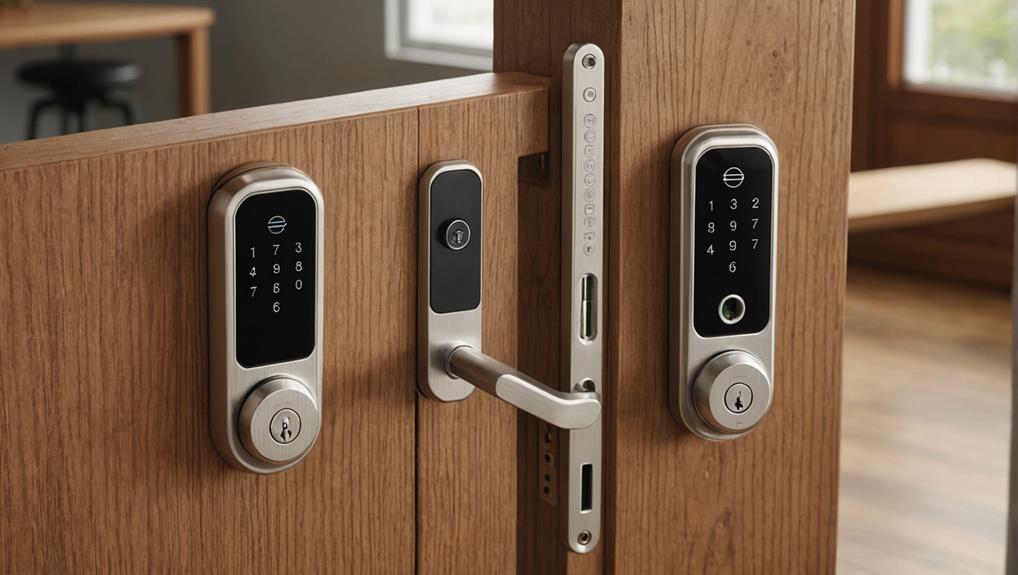
When weighing your options between smart locks and traditional locks, initial purchase costs play an essential role in your decision.
It's important to remember that while smart locks can offer enhanced security features, they may also come with a higher initial investment. Here are some key factors to contemplate:
- Traditional Locks: Typically priced between $20 to $100, these locks offer a straightforward solution without the tech features.
- Smart Locks: Expect to spend anywhere from $100 to $300, reflecting the advanced technology and features they provide. The additional costs can be seen as an investment in smart lock functionality that enhances home security.
- Features: While traditional locks focus on basic security, smart locks often include connectivity options, alarms, and remote access, justifying their higher price.
- Brand Variability: Different brands and models can greatly affect costs. It's wise to compare several options to find the best fit for your budget.
Installation Expenses
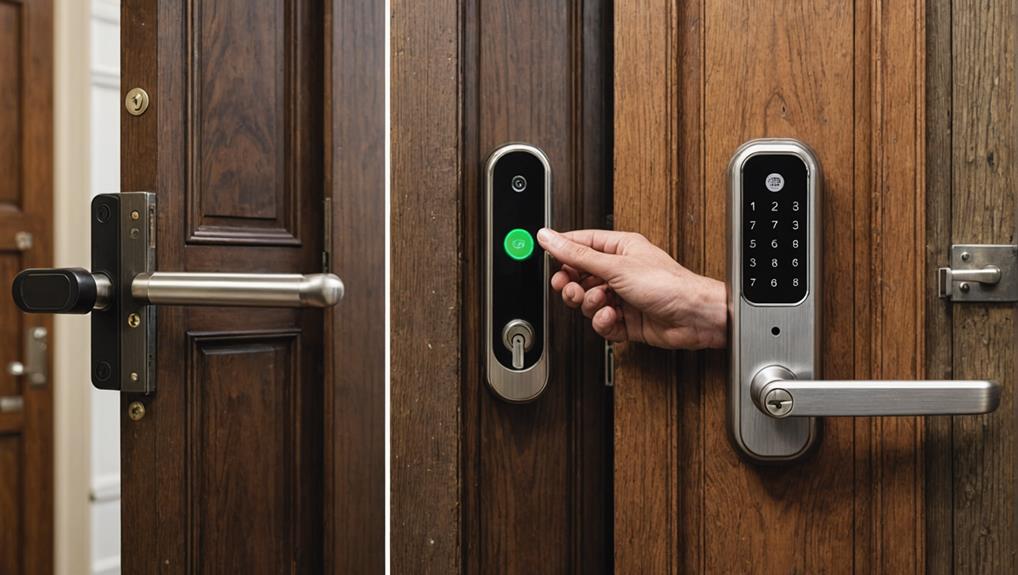
After pondering the initial purchase costs, it's important to factor in installation expenses, which can vary greatly between smart locks and traditional locks.
When you opt for a traditional lock, you might find the installation straightforward and often doable on your own. Most traditional locks come with clear instructions, allowing you to save on professional help if you're handy. However, if you're not comfortable, hiring a locksmith usually won't break the bank.
In contrast, smart locks often offer enhanced convenience and control, but this can complicate the installation process.
Smart locks typically require a bit more expertise during installation. Features like wiring and connectivity can complicate the process. While some smart locks offer DIY options, you may want to weigh the option of hiring a professional to ascertain everything is set up correctly. This could lead to higher installation costs compared to traditional locks.
Ultimately, the choice between smart and traditional locks can depend on your comfort level with installation. If you serve others by creating a secure environment, evaluate the installation expenses as part of your overall investment.
With the right approach, you can select a locking solution that meets your needs while keeping costs manageable.
Maintenance Costs
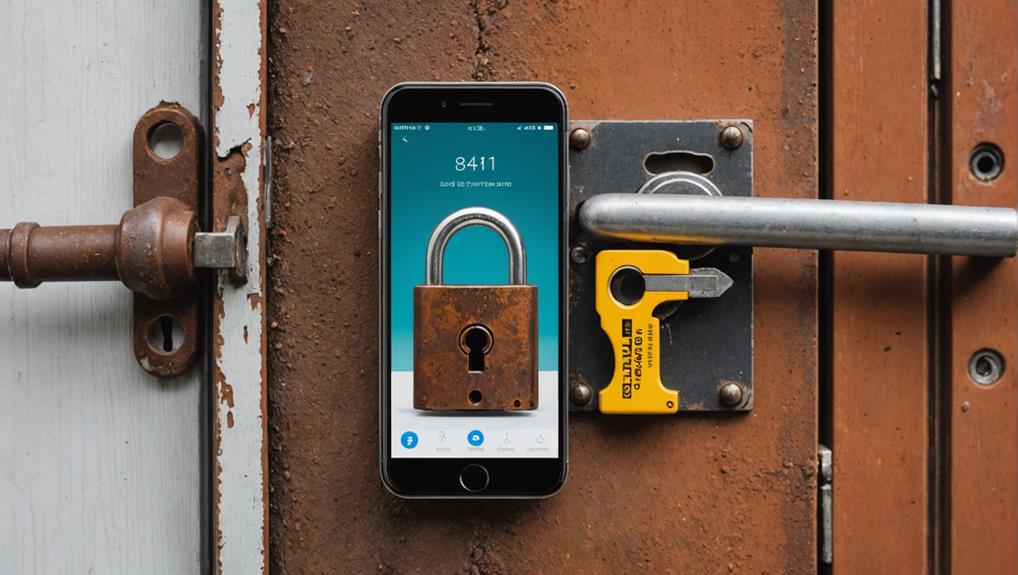
When it comes to maintenance costs, smart locks and traditional locks have different needs.
Smart locks often integrate advanced features such as connectivity and remote access, which can lead to higher maintenance requirements over time.
You'll find that smart locks may require more frequent repairs, battery replacements, and even occasional software updates, making it essential to contemplate the long-term implications of these hybrid lock systems.
Understanding these differences can help you make a more informed choice for your security needs.
Repair Frequency Differences
Smart locks and traditional locks differ markedly in their repair frequencies and maintenance costs. Understanding these differences can help you serve your community better by guiding others in making informed choices. Here are some key points to evaluate:
- Durability: Traditional locks often wear out more quickly due to mechanical parts, requiring repairs or replacements.
- Technology: Smart locks, while high-tech, generally have fewer mechanical failures as they're designed for durability, leading to lower repair frequency.
- Weather Resistance: Traditional locks can rust or corrode in harsh weather, increasing the need for repairs.
- User Error: Smart locks may experience fewer repair needs since they're often easier to operate, reducing the chances of user-related damage.
When you weigh these factors, you might find that smart locks could save you time and money in the long run.
While the initial investment may be higher, the reduced frequency of repairs can make them a more economical option.
Ultimately, you'll be better equipped to assist others in choosing the right lock for their specific needs.
Battery Replacement Expenses
While traditional locks require minimal maintenance beyond occasional lubrication, smart locks introduce an added cost in the form of battery replacements. You'll need to budget for these replacements regularly, depending on the type of smart lock you choose and how often you use it.
Here's a quick comparison of battery replacement expenses for various smart lock models:
| Smart Lock Model | Average Battery Life | Estimated Replacement Cost |
|---|---|---|
| Model A | 6 months | $10 |
| Model B | 1 year | $15 |
| Model C | 1.5 years | $12 |
| Model D | 2 years | $8 |
| Model E | 1 year | $20 |
As you can see, battery expenses can vary considerably. Depending on your selected model, you could spend anywhere from $8 to $20 per year on replacements. While this may seem minor, it's essential to factor these costs into your budget to guarantee you're adequately prepared. By being proactive about battery maintenance, you not only save money but also make certain your home remains secure for those you serve.
Software Update Costs
Battery replacements are just one aspect of maintaining a smart lock; software updates play a significant role in keeping your device secure and functioning at its best.
Regular updates guarantee your lock has the latest features and security patches, which is crucial in a world where cybersecurity threats are ever-evolving.
Here are a few key benefits of software updates:
- Enhanced Security: Updates often include fixes for vulnerabilities that hackers may exploit.
- New Features: Manufacturers frequently add functionalities to improve user experience and convenience.
- Compatibility: Regular updates guarantee that your smart lock works seamlessly with other smart home devices.
- Performance Improvements: Updates can optimize battery life and the lock's overall responsiveness.
While many smart locks offer free software updates, some may charge for premium features or extended support.
It's important to take into account these potential costs when evaluating your investment in a smart lock.
By staying informed about software updates, you not only maintain your device's performance but also contribute to a safer environment for yourself and those you serve.
Investing in smart lock maintenance is investing in peace of mind.
Longevity and Durability
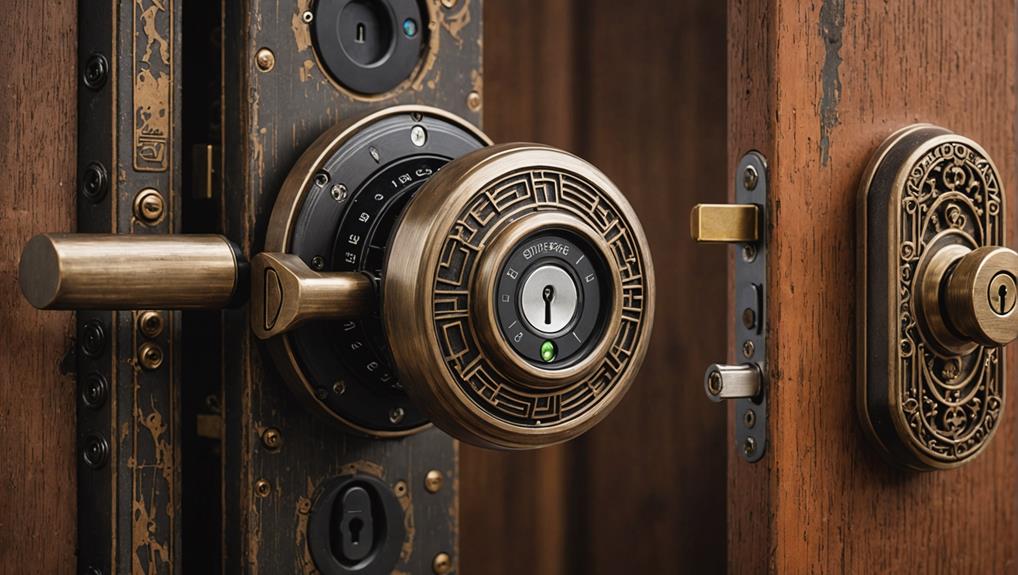
When considering longevity and durability in locks, you'll find that traditional locks often have the upper hand due to their robust, mechanical design. These locks are built to withstand the test of time, often lasting decades with little maintenance. In contrast, smart locks, while innovative, can be susceptible to wear and tear from electronic components and battery life issues.
Here's a brief comparison to help you visualize the longevity and durability of each option:
| Feature | Traditional Locks | Smart Locks |
|---|---|---|
| Lifespan | 20-50 years | 5-15 years |
| Maintenance Needs | Low | Moderate to High |
| Vulnerability | Low | Higher due to tech |
Choosing the right lock for your home isn't just about security; it's about ensuring peace of mind for you and your loved ones. Traditional locks offer proven durability and reliability that can serve your family for generations. When you invest in a traditional lock, you're not just protecting your home; you're also safeguarding memories and a sense of security.
Technology and Features
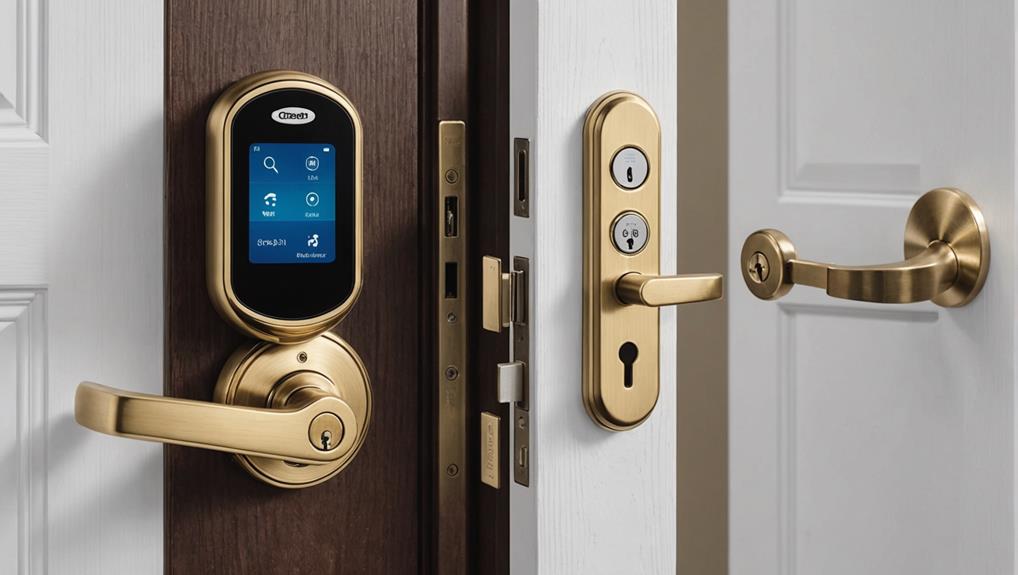
Traditional locks excel in durability, but smart locks bring a host of technological advancements that enhance convenience and security. These advancements can greatly improve the user experience, especially when considering aspects like ease of use and reliability.
When you consider these modern options, think about the following features that can truly serve your needs:
- Remote Access: You can access or lock your door from anywhere using your smartphone, making it easy to grant access to guests or service providers.
- Keyless Entry: No more fumbling for keys! You can use codes, biometrics, or even your phone to enter, simplifying access for you and your family.
- Activity Logs: Smart locks often provide logs that track who enters or leaves your home, helping you manage access for others while keeping your space secure.
- Integration with Smart Home Systems: Many smart locks can integrate with other smart home devices, allowing for seamless control and monitoring of your home environment.
These features not only elevate your living experience but also create a more welcoming atmosphere for your guests.
Security Considerations
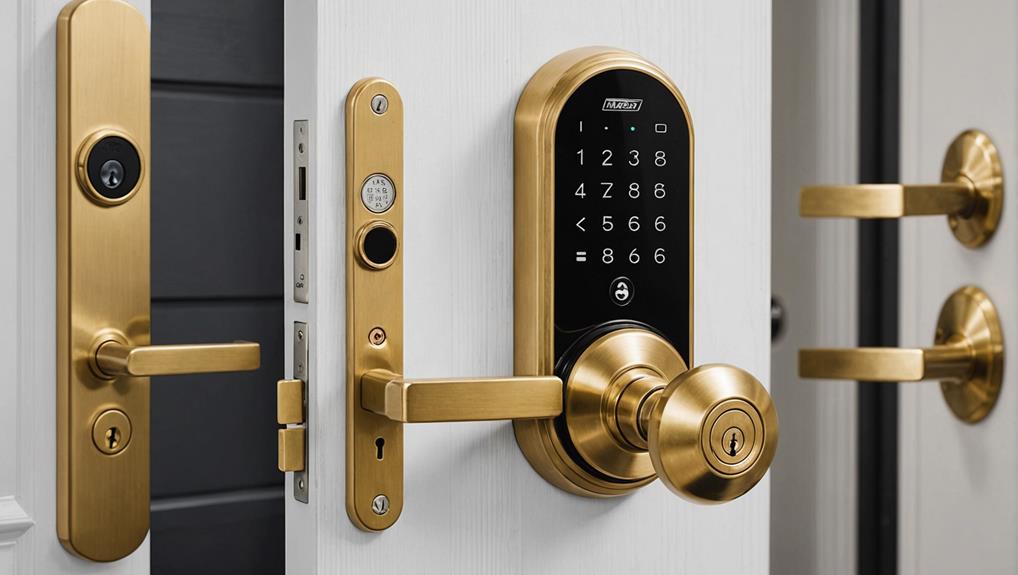
When choosing between smart locks and traditional locks, security should be at the forefront of your mind.
High-security locks offer enhanced protection against lock bypass techniques, making them a superior option due to their complex keyways and durable materials the advantages of high-security locks.
You need to contemplate potential lock bypass techniques, the risk of cyberattacks, and the physical strength of each option.
Understanding these factors can help you make a more informed decision about securing your home.
Lock Bypass Techniques
Lock bypass techniques pose significant security challenges for both smart and traditional locks. As someone who values the safety of others, it's vital to understand how these techniques can undermine security.
Here are some common methods used to bypass locks:
- Lock Picking: Skilled individuals can manipulate the pins in a lock to open it without a key.
- Bumping: This involves using a specially designed key to strike the pins, allowing the lock to open easily.
- Shimming: A shim can slip into a lock, disengaging the mechanism and allowing it to be opened.
- Drilling: In some cases, drilling a lock can provide direct access, though this often damages the lock.
Awareness of these techniques is essential for anyone looking to improve security. You can help others by encouraging the use of high-quality locks and educating them on the importance of securing their homes.
While no lock is completely impervious to bypass techniques, understanding these vulnerabilities can lead to better choices and enhanced security measures.
Cybersecurity Risks
Smart lock technology offers convenience and advanced features, but it also introduces unique cybersecurity risks that users must consider. When you choose a smart lock, you're relying on the software and internet connections that can be vulnerable to hacking.
Cybercriminals may exploit weak passwords, unsecured networks, or outdated firmware to gain unauthorized access to your home. It's essential to prioritize strong, unique passwords and enable two-factor authentication wherever possible.
Regularly updating your lock's software is also vital, as manufacturers frequently release patches to address security vulnerabilities.
Moreover, consider the data your smart lock collects. Many devices store access logs and user information, which could be at risk if a breach occurs.
Being mindful of the privacy policies and data handling practices of the manufacturers can help you make informed choices.
Physical Security Strength
While cybersecurity risks are a significant concern, physical security strength also plays an essential role in protecting your home. You want to guarantee that your loved ones and belongings are safe, and understanding the physical security aspects of locks can help you make informed decisions.
Here are four key considerations:
- Material Quality: Strong materials can resist tampering and break-ins.
- Lock Type: Deadbolts offer more resistance compared to standard spring locks.
- Installation: Proper installation is vital; even the best lock can fail if not installed correctly.
- Access Points: Evaluate all entry points in your home, not just the front door.
When comparing smart locks to traditional locks, consider how each type stands up against forced entry. Traditional locks can provide robust physical security, while smart locks often combine convenience with vulnerability to hacking.
However, some smart locks come with features like tamper alerts and automatic locking, which can enhance your home's security. Ultimately, the right choice hinges on your unique needs and priorities.
Resale Value Impact
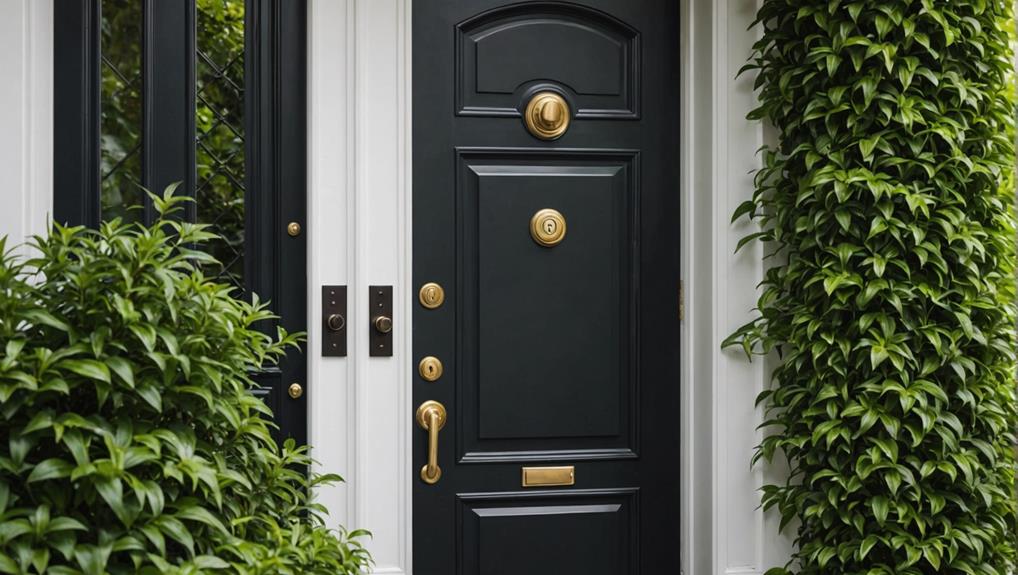
When considering the resale value of a property, the choice between smart locks and traditional locks can greatly influence potential buyers' perceptions.
Smart locks often appeal to tech-savvy buyers who prioritize convenience and modern security features. By installing smart locks, you're not just upgrading your home's security but also enhancing its attractiveness on the market. Additionally, many buyers are attracted to the flexibility of managing access through features like re-keying and reprogramming options, which can provide peace of mind regarding security management.
Many buyers appreciate the ability to control access remotely, receive alerts about who enters their home, and even integrate locks into broader smart home systems. This appeal can translate into a higher resale value.
On the other hand, traditional locks may attract buyers who value simplicity, reliability, and a lower price point. However, they mightn't have the same allure in a market increasingly dominated by smart technology.
Ultimately, your choice can signal to potential buyers the level of care and modernization in the property. To serve your future buyers best, consider how your locking system aligns with current trends and the preferences of your target market.
Making a thoughtful decision can enhance your home's resale potential, ensuring you're offering value that resonates with prospective homeowners.
Overall Cost Assessment
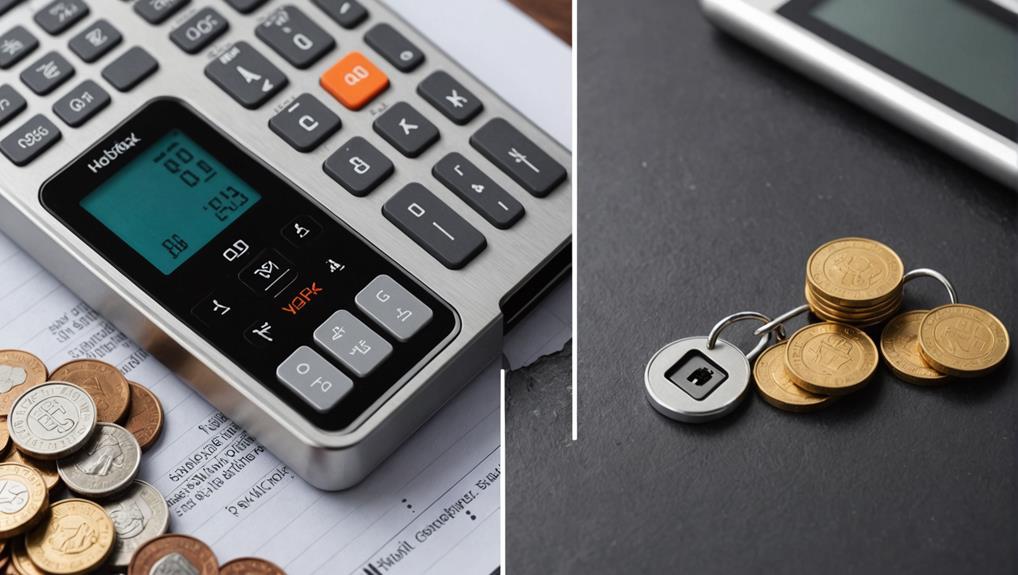
Cost plays an essential role in deciding between smart locks and traditional locks. When evaluating your options, consider these key factors:
- Initial Purchase Price: Smart locks often have a higher upfront cost, but they come with advanced features that may improve security and convenience. Investing in high-quality locks can provide peace of mind and long-term savings through enhanced protection.
- Installation Fees: Traditional locks are typically easier and cheaper to install, while smart locks may require professional help.
- Maintenance Costs: Smart locks might need software updates and battery replacements, whereas traditional locks generally require minimal upkeep.
- Insurance Premiums: Some insurers offer discounts for smart locks due to their enhanced security, potentially offsetting their higher initial cost.
In your assessment, think about how these factors fit into your budget and long-term plans.
If you're looking to serve your community, investing in smart locks can enhance security and convenience, benefiting not just you but also your neighbors.
However, traditional locks can be a reliable and cost-effective choice for those who prioritize simplicity.
Ultimately, balancing these costs with the value each option provides will help you make a responsible decision that aligns with your values and serves those around you.
Frequently Asked Questions
Can Smart Locks Be Hacked Easily Compared to Traditional Locks?
When you think about whether smart locks can be hacked easily, it's important to recognize that they do have vulnerabilities due to their reliance on technology.
However, traditional locks can also be bypassed through physical means.
You'll find that smart locks often come with advanced security features, like encryption and alerts, which add layers of protection.
Ultimately, staying informed and choosing reputable brands can help you enhance your home's security effectively.
How Do Smart Locks Function During Power Outages?
During power outages, smart locks often rely on backup battery power, ensuring you can still access your home.
Most models use standard batteries, which can last several months. If the batteries run out, you can usually open the lock using a physical key.
It's a great idea to keep spare batteries on hand and familiarize yourself with the manual key option, so you're prepared for any situation that arises.
Are Smart Locks Compatible With All Door Types?
Smart locks aren't universally compatible with all door types, so it's essential to check compatibility before purchasing.
Most smart locks fit standard doors, but if your door is non-standard or has unique features, you might face challenges.
You'll want to measure your door and read the product specifications carefully.
What Happens if I Lose My Smartphone With a Smart Lock?
If you lose your smartphone with a smart lock, you might think you're locked out of your own home—ironic, right?
But don't panic! Most smart locks have backup keys or options to access your home through a keypad or biometric scanner.
You can also use a spare phone to regain access via the lock's app.
Just remember to change your passwords and consider a backup plan for future mishaps!
Can Multiple Users Access a Smart Lock Simultaneously?
Yes, multiple users can access a smart lock simultaneously, which makes it really convenient for families or roommates.
You can easily grant access to friends or service providers through an app, allowing them to open the door without needing a physical key.
Just make sure to manage permissions carefully; you wouldn't want to give access to someone who shouldn't have it.
Conclusion
In the end, choosing between smart locks and traditional locks really boils down to your needs and lifestyle. While some may worry about the upfront cost of smart locks, imagine the peace of mind you'll have knowing you can lock your door from anywhere or receive alerts when someone enters your home. Investing in a smart lock not only enhances your security but also adds convenience, making it well worth the initial expense for many homeowners.

